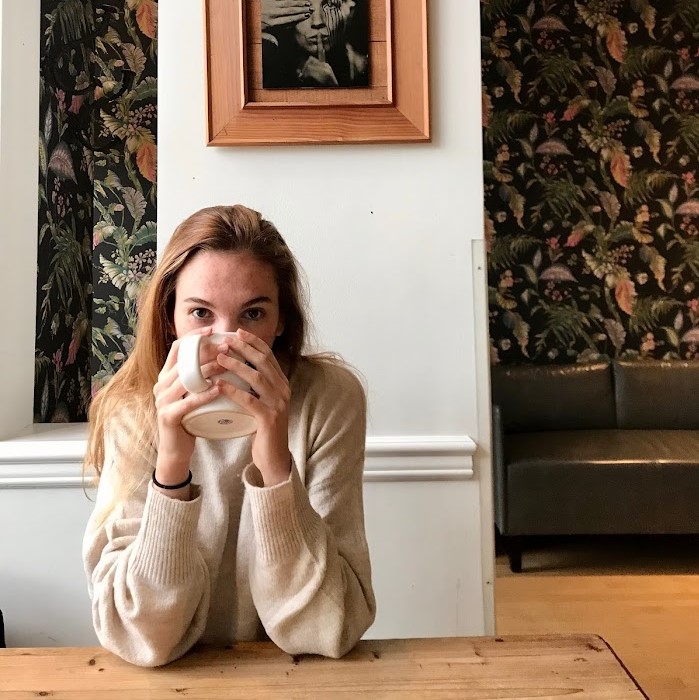More about National Gallery of Denmark
Works at National Gallery of Denmark

Contributor
The National Gallery of Denmark or, if you speak Danish, the Statens Museum for Kunst, began collecting as early as the 16th century.
In typical rich dude fashion, King Christian IV and King Frederick V expanded the collection until 1849, when Denmark became a democracy and the collection was transferred to the state. Fun fact: King Christian IV reigned for 59 years, and led Denmark into two disastrous, unsuccessful wars against Sweden. But he collected art! Fast forward two-hundred years later to King Frederick V. He was kind of a dud, but he liked art and continued to promote the arts. Now that’s a W in my book. Thanks in large part to these two very different monarchs, Denmark has amassed a collection of art worthy of any tourist's valuable sightseeing time.
History aside, The National Gallery of Denmark is a pretty nifty place. Home to the largest art collection in Denmark, jewels of the permanent collection include masterpieces by Danish and Nordic artists from the 1750s forward, plus important artworks from Europe, including Albrecht Durer and many artworks from the famous Edvard Munch.
Unfortunately, the National Gallery of Denmark is no longer free. Sad day, but you are able to buy a combination pass that allows you access to a variety of museums and galleries in Copenhagen for one price. Ride your rental bike up to this imposing neoclassical building and feast your eyes on some Danish and Norwegian culture. And don’t forget the cafe. The cafe has some tasty danishes.
Sources
- “About SMK: The National Gallery of Denmark.” Accessed November, 2018. https://www.smk.dk/en/section/about-smk/
- Bekker, Henk. “Visit the National Gallery of Denmark in Copenhagen.” Accessed November, 2018. https://www.copenhagen-travel.tips/sights/visit-the-free-national-galle…
- Enberg, Jen. “Christian IV Scandinavian King.” Last modified April, 2018. https://www.britannica.com/biography/Christian-IV
- Explore The National Gallery of Denmark. Copenhagen: Visit Denmark, 2016.
- The Editors of Encyclopedia Britannica. “Frederick V King of Denmark and Norway.” Last modified March, 2018. https://www.britannica.com/biography/Frederick-V-king-of-Denmark-and-No…

Contributor
SMK is no longer just Super Mario Kart—it's also the Statens Museum for Kunst, a major foray into the art world by the State of Denmark.
In 1825, the collection began in three fiduciary groups from the Kongens kunstkammer, the art collection of the Konge—not Donkey Kong, but the Danish king. Three special museums formed from the remnants of the Kongens kunstkammer: a museum of ethnography, the Old Nordic collection, and the Antique display. Between 1537 and 1814, Denmark and Norway were united as "Denmark–Norway," so there's a lot of Norse culture here too. All three of these were consolidated by the government to form the SMK.
To keep everyone guessing, you can also call it Nationalmuseet or the National Gallery of Denmark. If you call it the National Gallery of Denmark, rather than the Statens Museum for Kunst, it might say something about your personality. It could mean that the word "Kunst" is unfamiliar and worries you, because those three consonants in a row sound pretty harsh. "Statens Museum for Kunst" conveys more information, as "The State Museum of Art" coveys that the art was supported, salvaged, or otherwise collected by the State.
The phrase "glassblower's grandson" doesn't immediately bring to mind the phrase "elected public servant," but they both describe Johannes Rump, nephew of the landscape painter Christian Godtfred Rump. For the industrious House of Rump, art was practically the essence of life: son of glass master Carl David Rump of Kurland (1785-1857) and Cathrine Ingeborg born Jørgensen (1797-1874) of Hillerød, Christian Rump believed that the craft of glassmaking was connected to the art of painting. Johannes Rump was an engineer and member of the Copenhagen City Council from 1903 to 1932. Collecting art was a huge thing for him, and he managed to find early works by André Derain, Georges Braque, and Henri Matisse, which he included in a large donation to the Museum in 1928.
The Museum collection also features work by Andrea Mantegna, Filippo Lippi, Titian, Lucas Cranach the Elder, Peter Paul Rubens and Rembrandt. It also has a hefty online branch, with more than 30,000 works in a public domain collection, which you can download and use for commercial or non-commercial purposes. All in all, in the country known for LEGO, Hamlet, and conquering England for a while, you can find one of the most impressive collections in Northern Europe.
Sources
- "Joakim og Annas gensyn uden for Jerusalems Gyldne Port, 1497." SMK, https://www.smk.dk/highlight/joakim-og-annas-gensyn-uden-for-jerusalems….
- "Johannes Christian Magnus Rump." Gravsted, 2015, https://gravsted.dk/person.php?navn=johannesrump.
- "Kongens kunstkammer." Nationalmuseet, https://natmus.dk/museer-og-slotte/nationalmuseet/udstillinger/kongens-….
- "Melankolien, 1532." SMK, https://www.smk.dk/highlight/melankolien-1532/.
- "Værker til fri download." SMK, https://www.smk.dk/article/vaerker-til-fri-download/.
Featured Content
Here is what Wikipedia says about National Gallery of Denmark
The National Gallery of Denmark (Danish: Statens Museum for Kunst, also known as "SMK", literally State Museum for Art) is the Danish national gallery, located in the centre of Copenhagen.
The museum collects, registers, maintains, researches and handles Danish and foreign art dating from the 14th century to the present day.
Check out the full Wikipedia article about National Gallery of Denmark
















I have visited the National Gallery of Denmark with my wife. She is an artist and has great knowledge of understanding the arts.